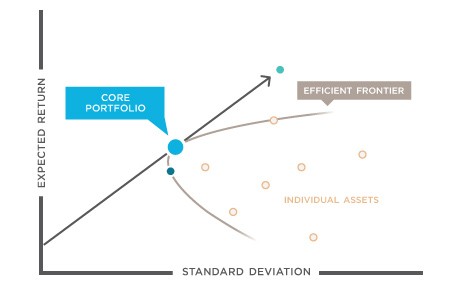ETFs Favored For Their Flexibility
Post on: 10 Май, 2015 No Comment

W ith global capital markets in constant flux, it’s paramount for active investors to employ flexible instruments so that they can reposition their portfolios at any time and access any market they wish.
It’s no different for active traders in retirement accounts, where, in addition to flexibility, minimizing fees helps avoid erosion of the tax-advantaged benefits they provide.
ETFs offer the combination of these advantages.
From my standpoint, mutual funds are different from ETFs, said Robbie Cannon, president and chief executive at Horizon Investments. ETFs are building blocks. And for someone that’s looking out 15 to 20 years in terms of retirement, you’re wanting as flexible of a vehicle as possible, because you might have to change that as that 15 or 20 years elapses.
Exchange traded funds usually track a basket or index of securities and are traded intraday just like stocks. Mutual funds, on the other hand, are priced only at closing and cannot be traded intraday.
It’s been difficult if not impossible to trade ETFs in 401(k) portfolios. The platforms for administering those plans did not support this kind of active trading.
Last year, however, Charles Schwab (NYSE:SCHW ) rolled out a new 401(k) version of its Schwab Index Advantage platform, which allows participants to invest in low-cost ETFs, trade them intraday, get partial-share allocations and access a broad range of asset categories.
ETFs in 401(k) plans: It’s a foregone conclusion that it will happen. It’s not a matter of if, it’s a matter of when, he said. It’s a $2 trillion management engine that continues to proliferate out. to bring flexibility not only to the advisory community but also to the individual client. It’s here to stay.
More Choices
In Schwab’s 401(k) ETF platform, investors can invest in 27 asset categories vs. its Schwab Index Advantage mutual fund platform, which offers 19 asset categories.
Due to their more complex structure, mutual funds tend to be more expensive than ETFs. The differences may be minimal when looking at large index-tracking mutual funds.
Vanguard Index 500. a $198.7 billion mutual fund, has an expense ratio of just 0.17%. Charging even less, SPDR S&P 500 (ARCA:SPY ) ETF takes 0.09% of assets a year to cover expenses. But the gap becomes more apparent when getting exposure to international markets, Cannon explained.
Mutual funds carry a cost. There is a cost to the structure, to the share classes that aren’t there with an ETF, he said. Mutual funds also require more record-keeping due to the fractional share calculations.














